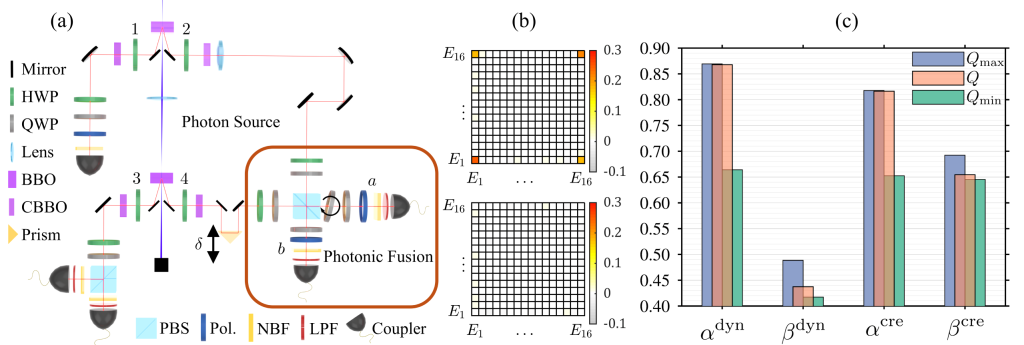[2025/09/11] 研究新發現:以兩組實驗設置實現量化量子動力學特徵 [New Research Findings: Quantification of Quantum Dynamical Properties with Two Experimental Settings]
2025-09-10
描述量子動力學的特徵對於量化量子過程的任意特性至關重要,例如其展現量子力學動力學或產生糾纏的能力。然而,目前的方法需要大量的實驗設置,這些設置會隨著系統規模的擴大而增加,從而導致實驗誤差造成的偽影。根據我們最新的研究發現,存在一種近似優化方法,該方法僅使用兩個互不偏倚的基底來估計屬性度量,從而計算它們的上下界,並重建相應的過程。這種系統規模無關性可以防止誤差累積,並允許表徵本徵量子動力學。與量子製程層析成像相比,我們在光子融合上進行了實驗驗證,證明了該方法能夠精確地估計資源,同時顯著減少了所需實驗設定數量從 81 個減少到 10 個。這些結果表明,我們的方法非常適合估計從晶片級量子處理器到長距離量子網路等架構中的動態特性。細節可參閱預印本:https://arxiv.org/abs/2508.19668
Characterizing quantum dynamics is essential for quantifying arbitrary properties of a quantum process—such as its ability to exhibit quantum-mechanical dynamics or generate entanglement. However, current methods require a number of experimental settings that increases with system size, leading to artifacts from experimental errors. Here, we propose an approximate optimization method that estimates property measures using only two mutually unbiased bases to compute their lower and upper bounds, and to reconstruct the corresponding processes. This system-size independence prevents error accumulation and allows characterization of the intrinsic quantum dynamics. Compared with quantum process tomography, we experimentally validate our method on photonic fusion and controlled-NOT operations, demonstrating accurate resource estimation while substantially reducing the number of required Pauli experimental settings: from 81 to 10 for the photonic fusion and to 2 for the controlled-NOT. These results show that our method is well-suited for estimation of dynamical properties in architectures ranging from chip-scale quantum processors to long-distance quantum networks.
Please refer to the following link for more details: https://arxiv.org/abs/2508.19668
